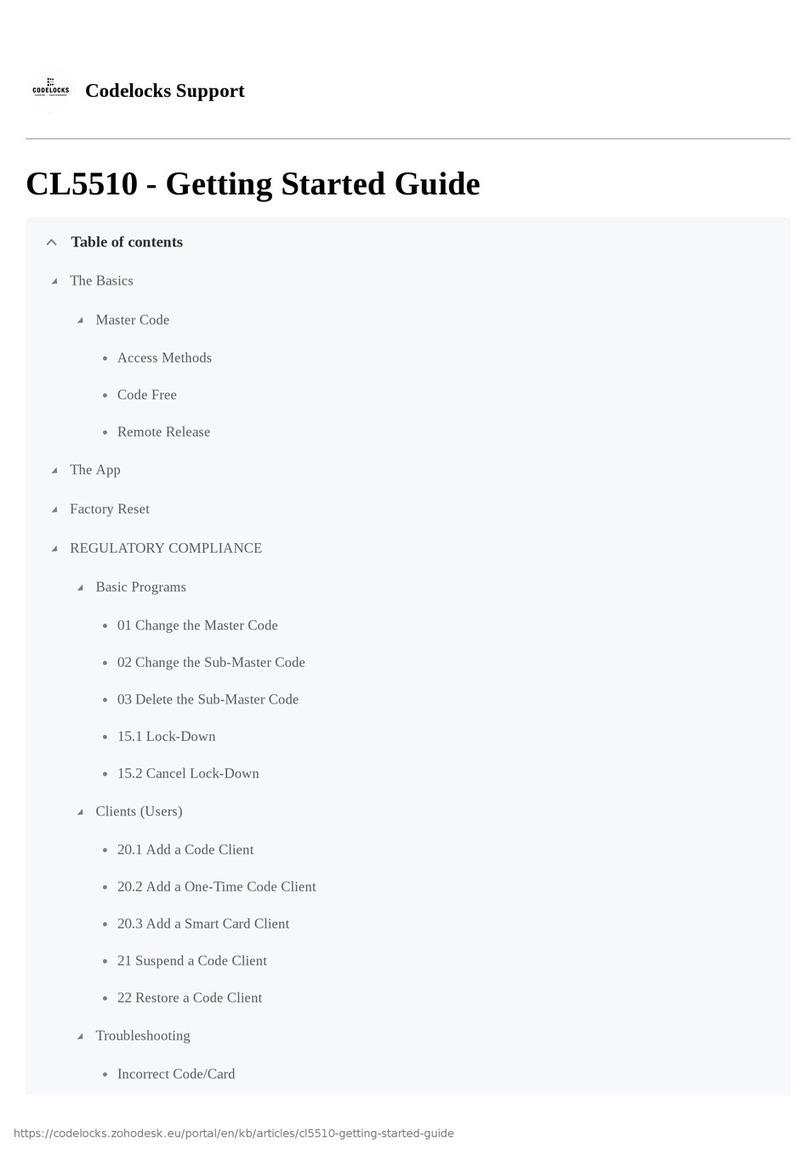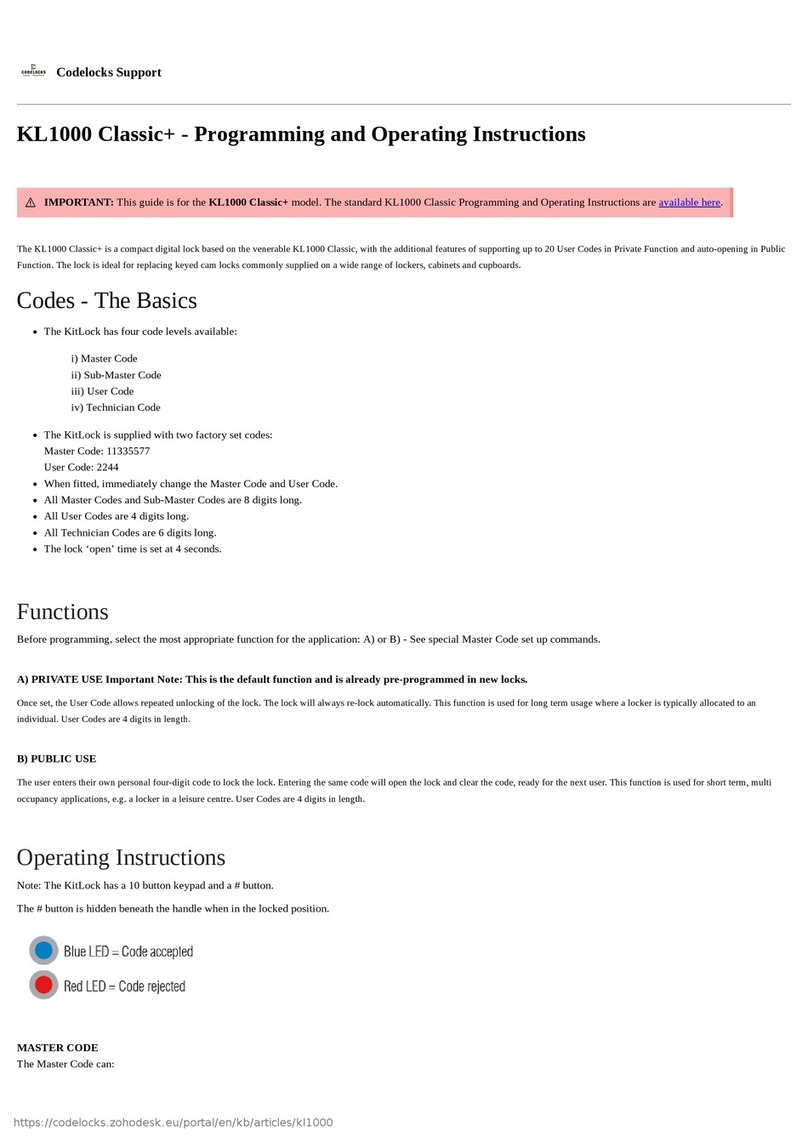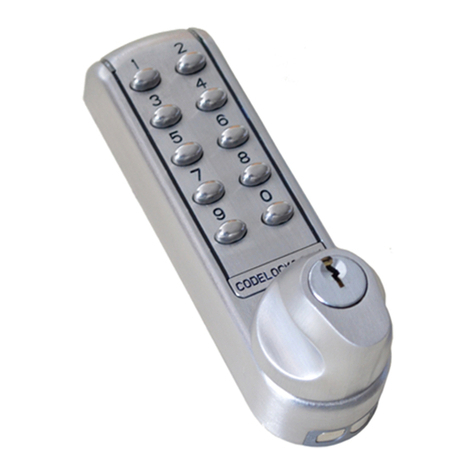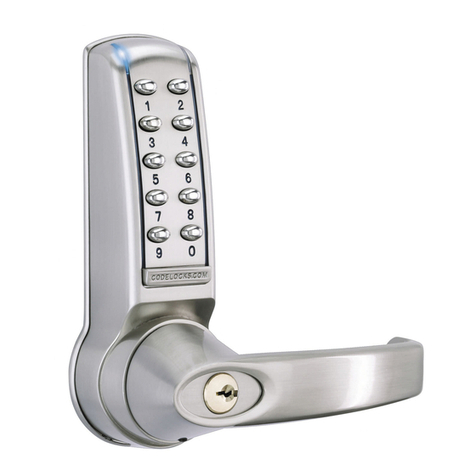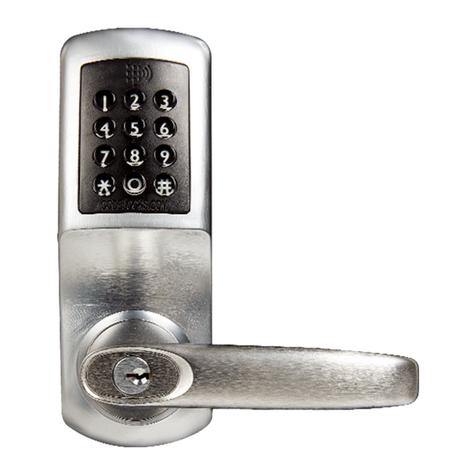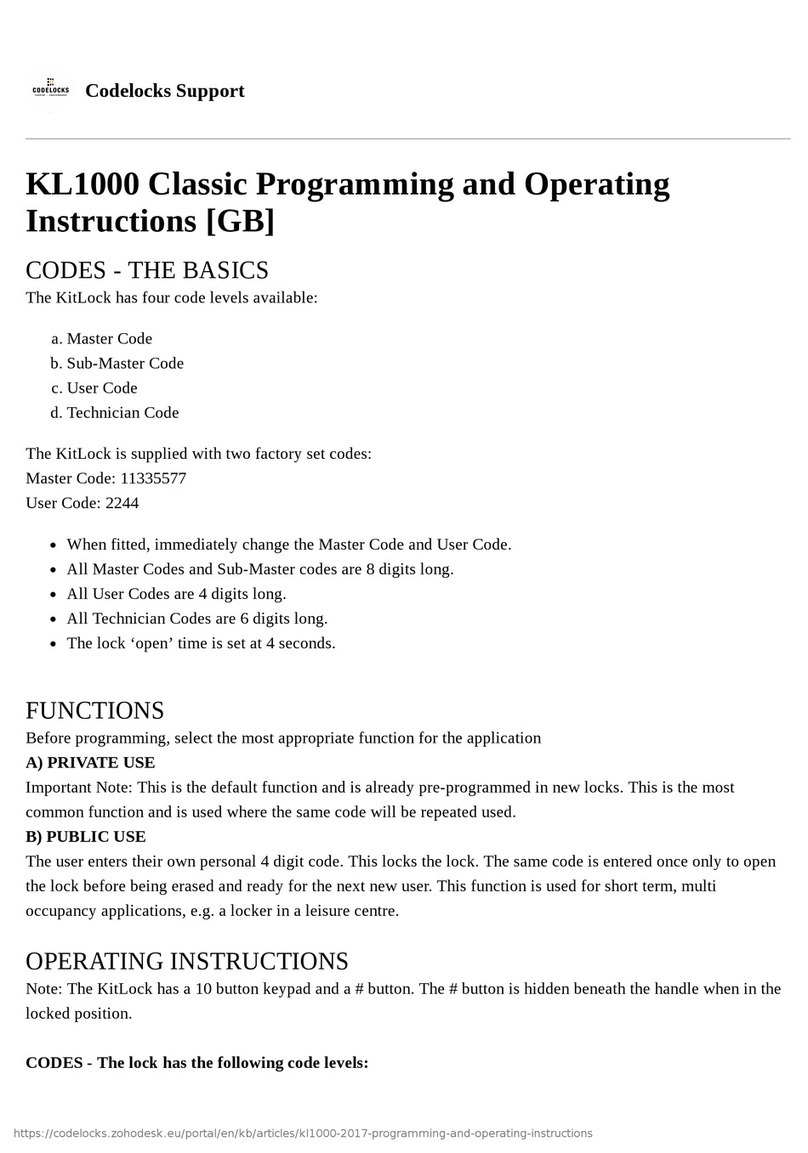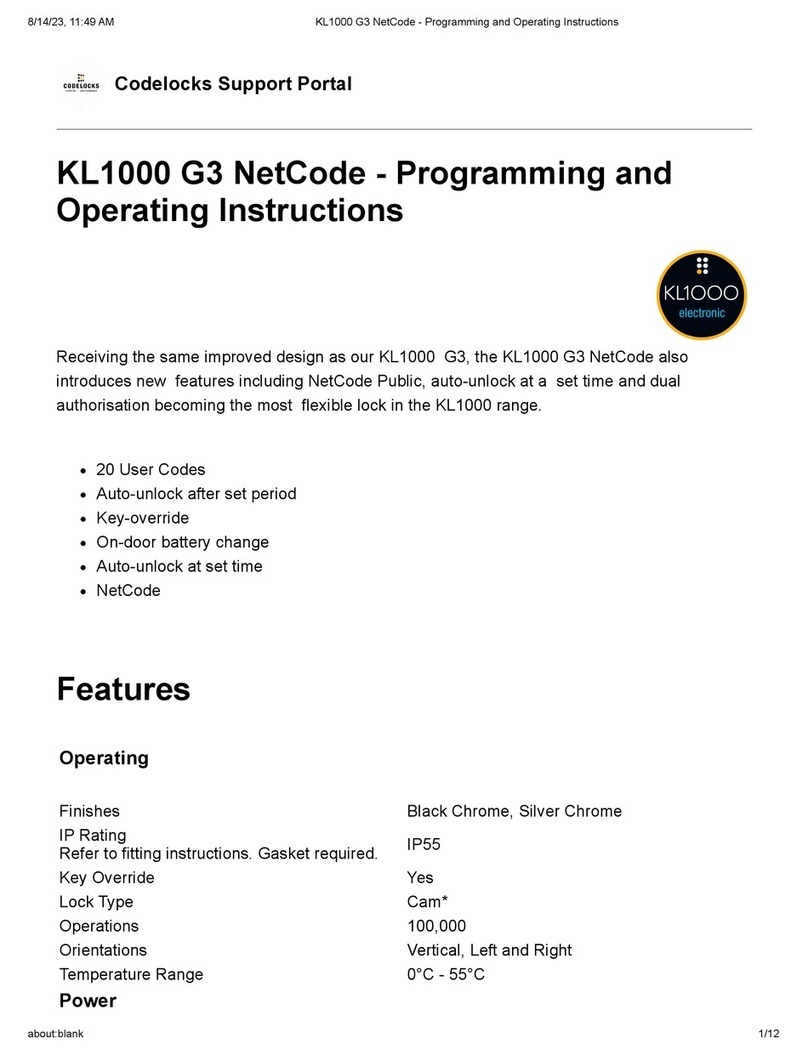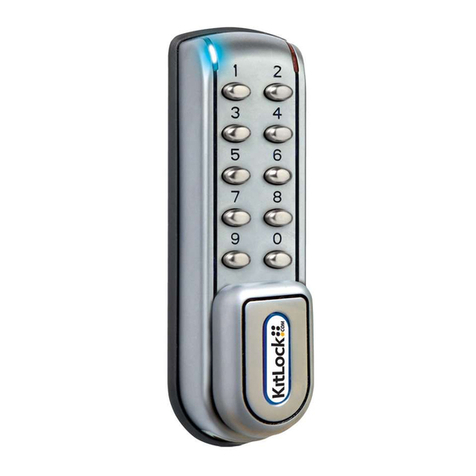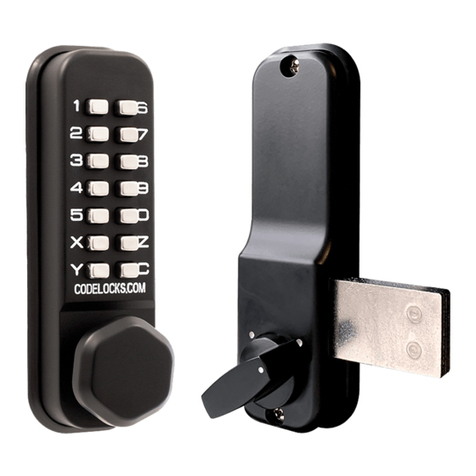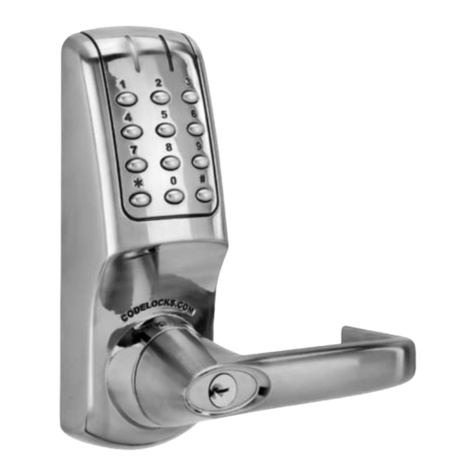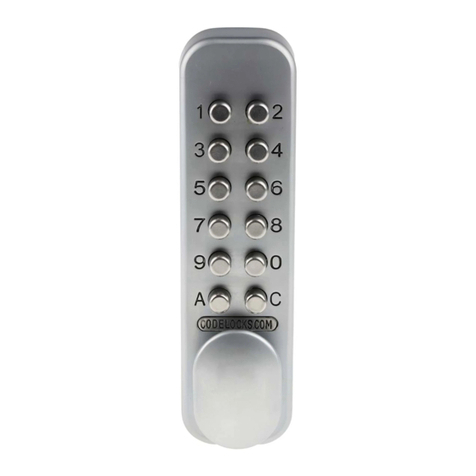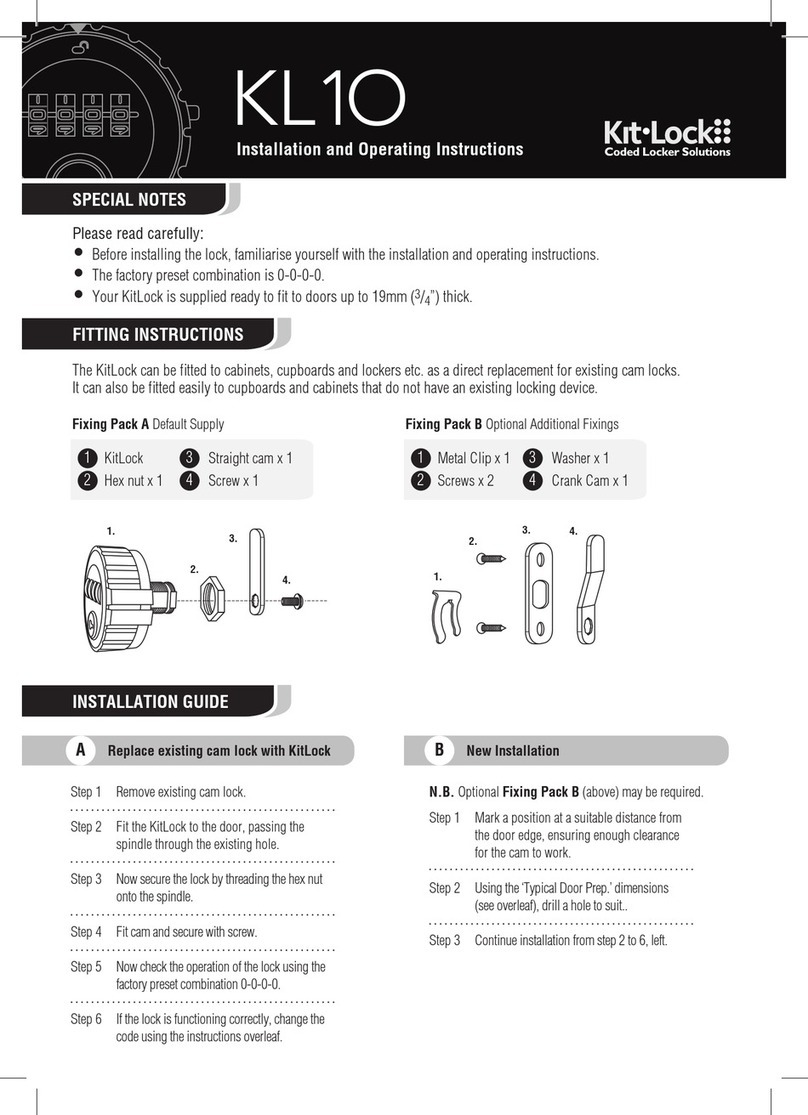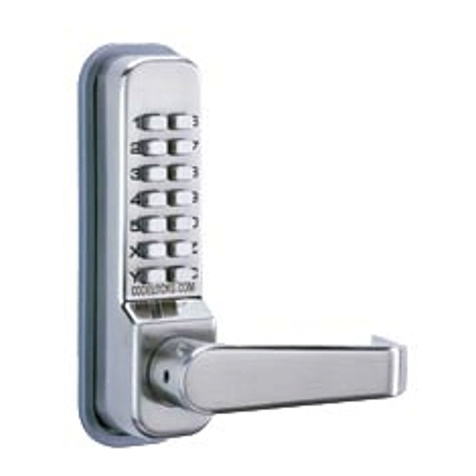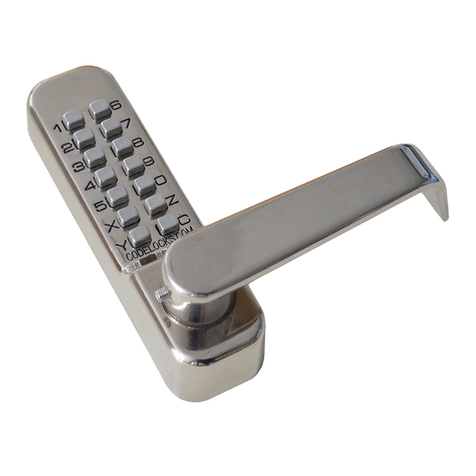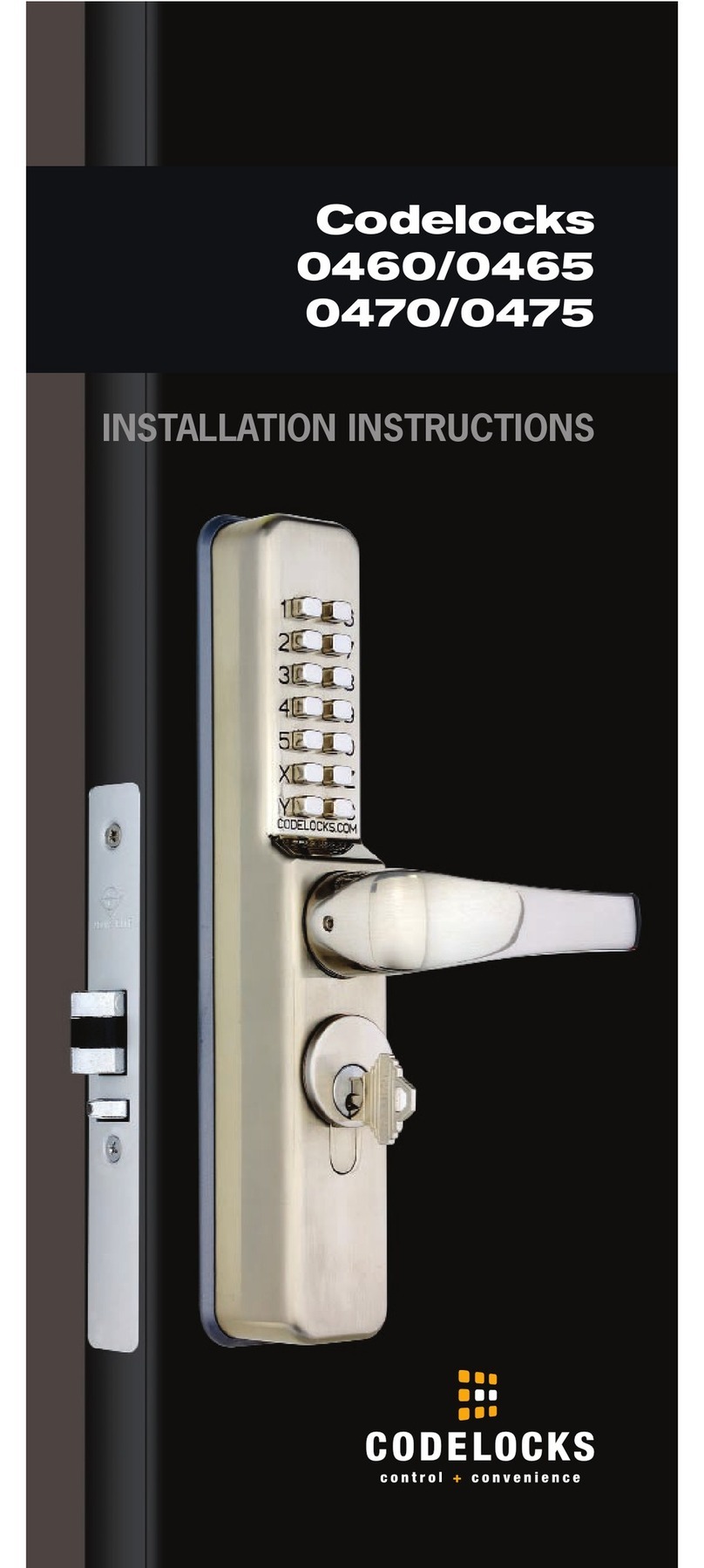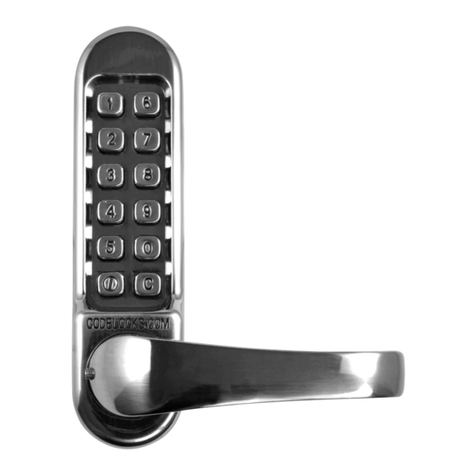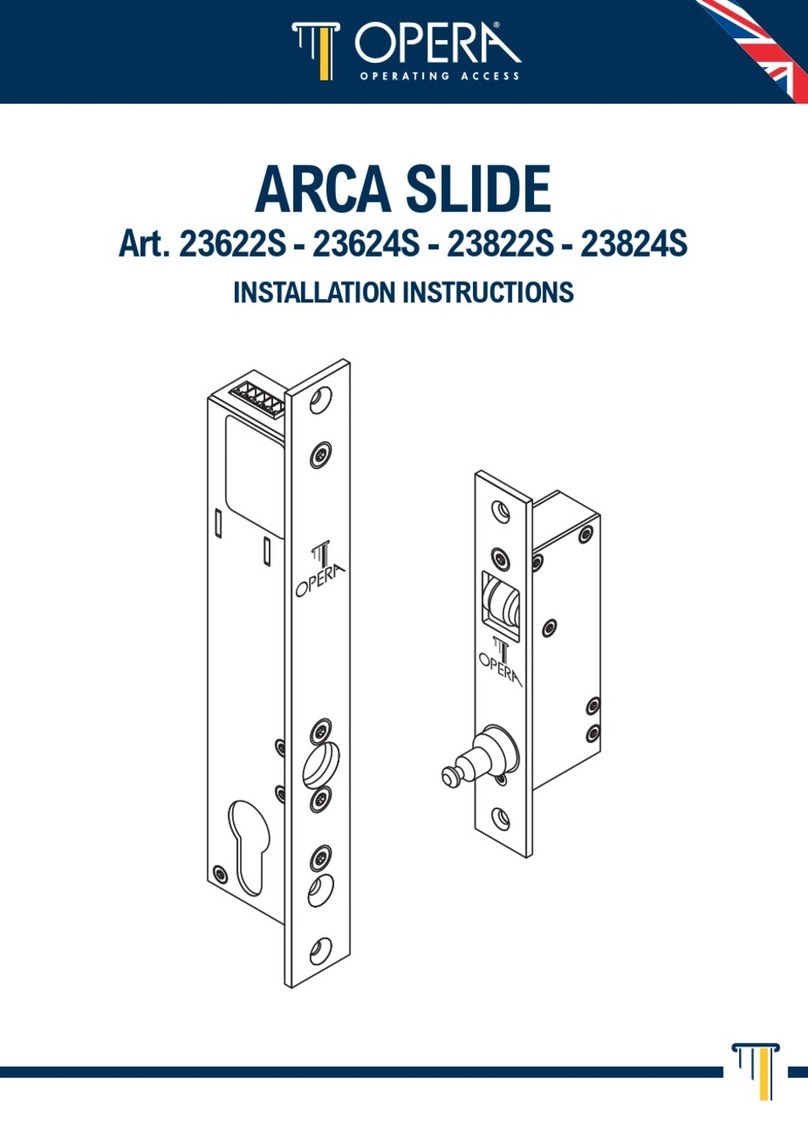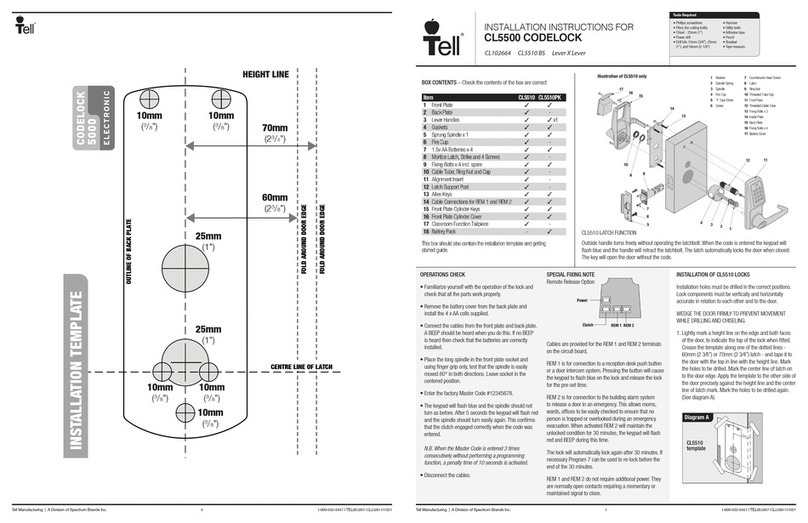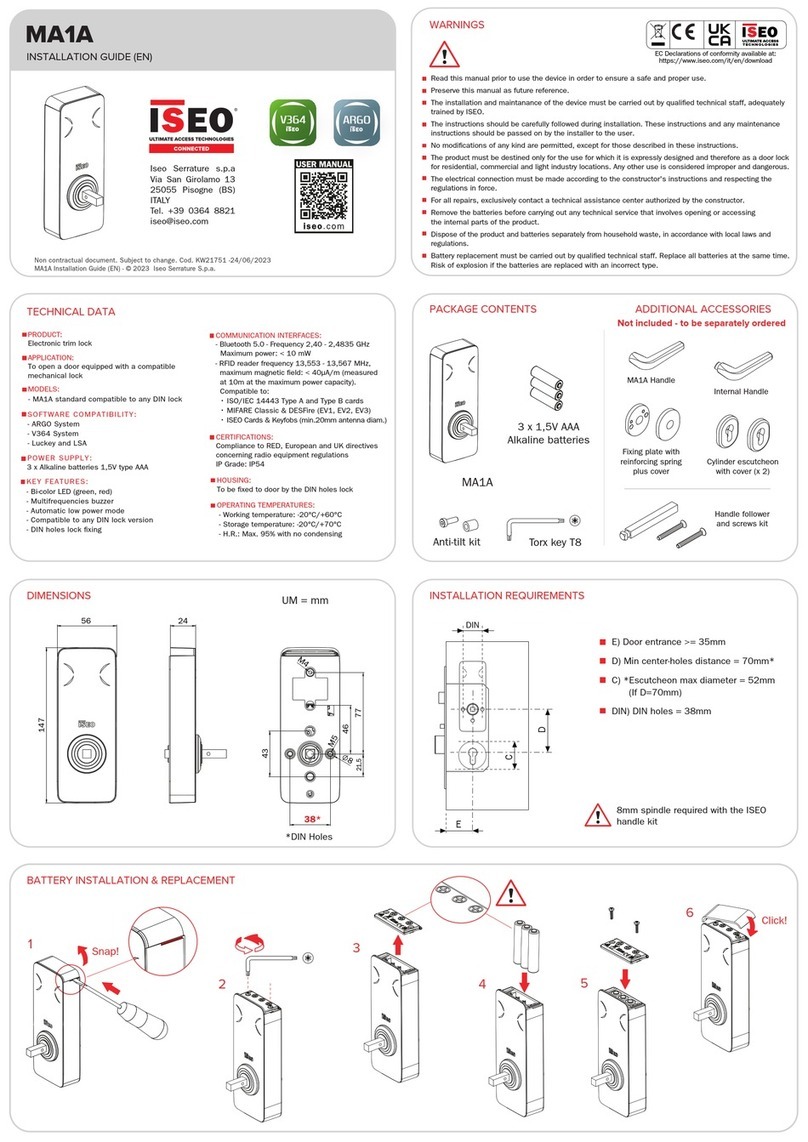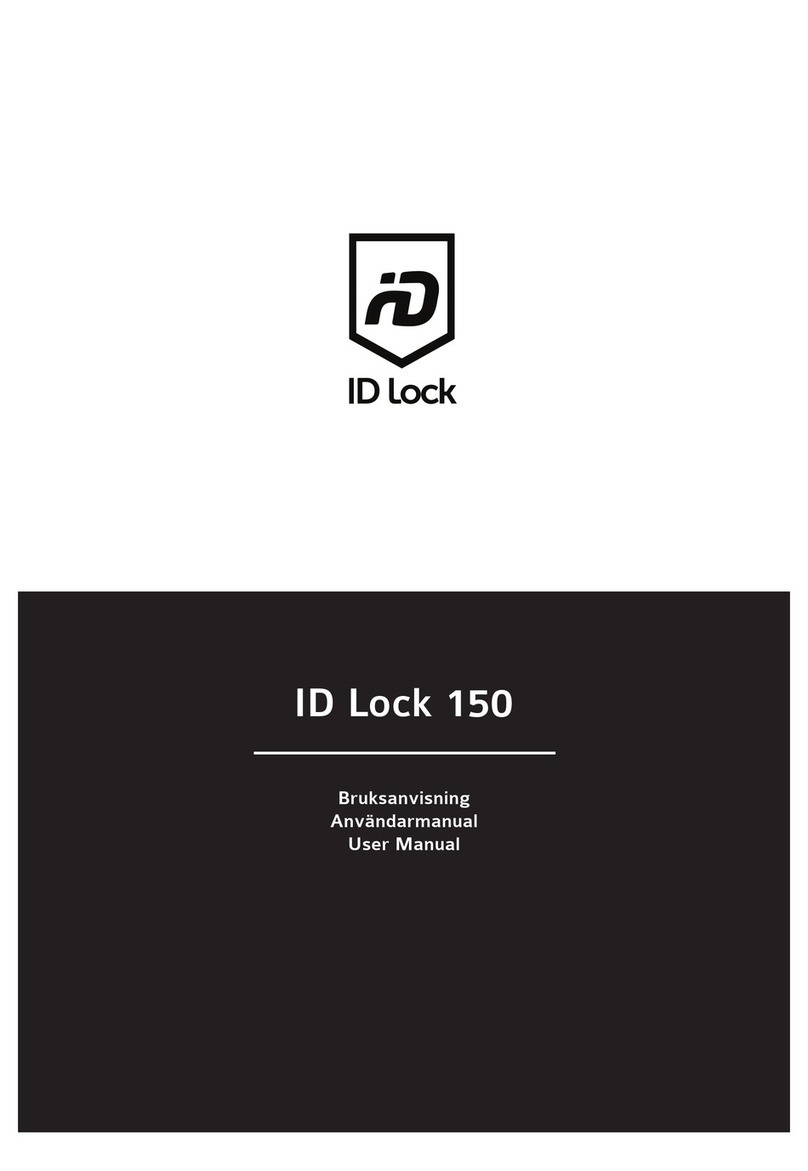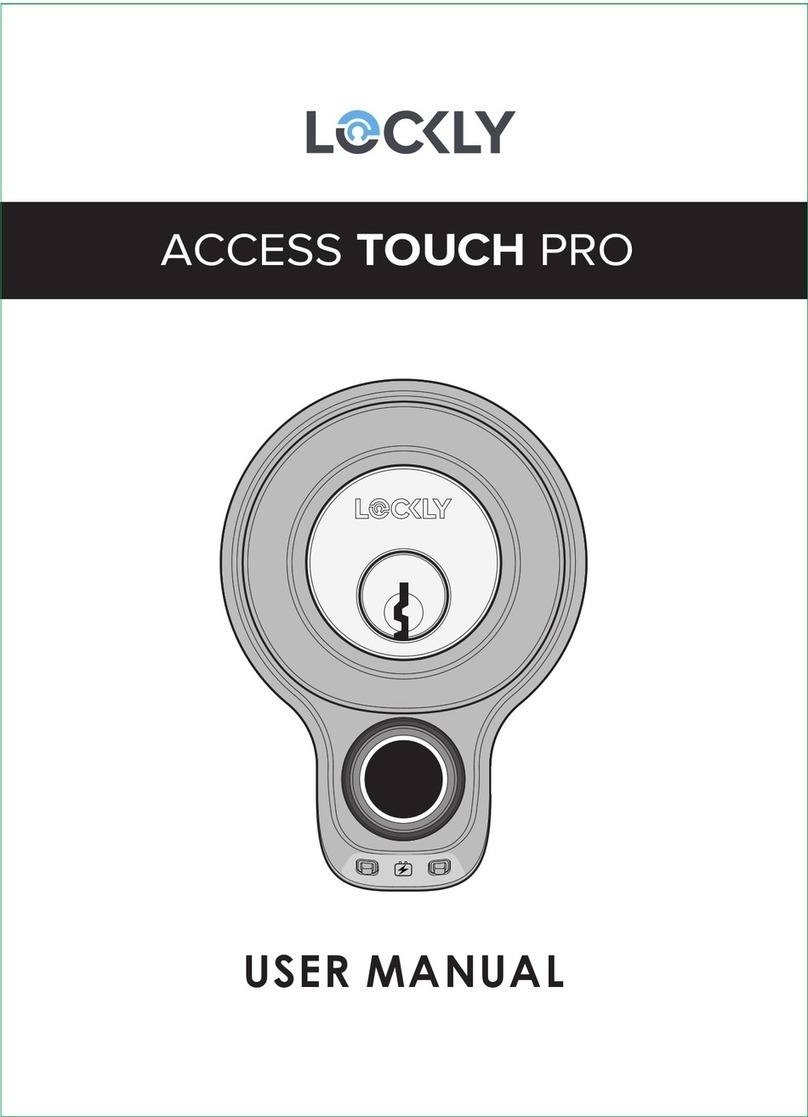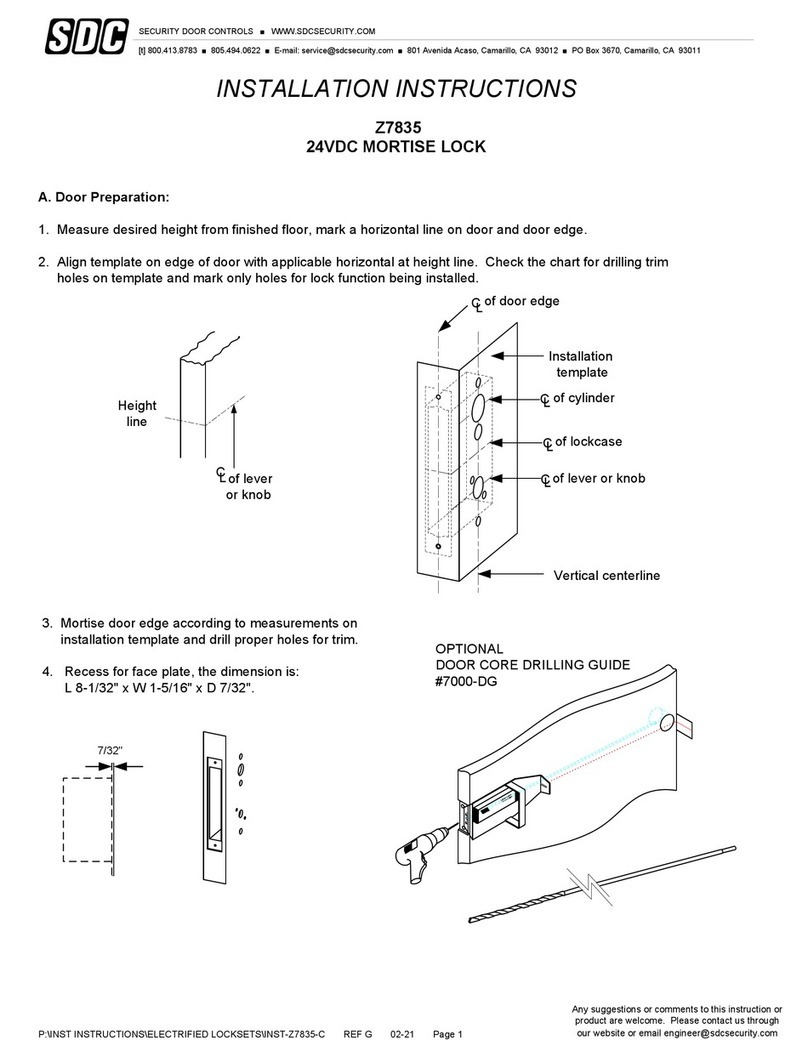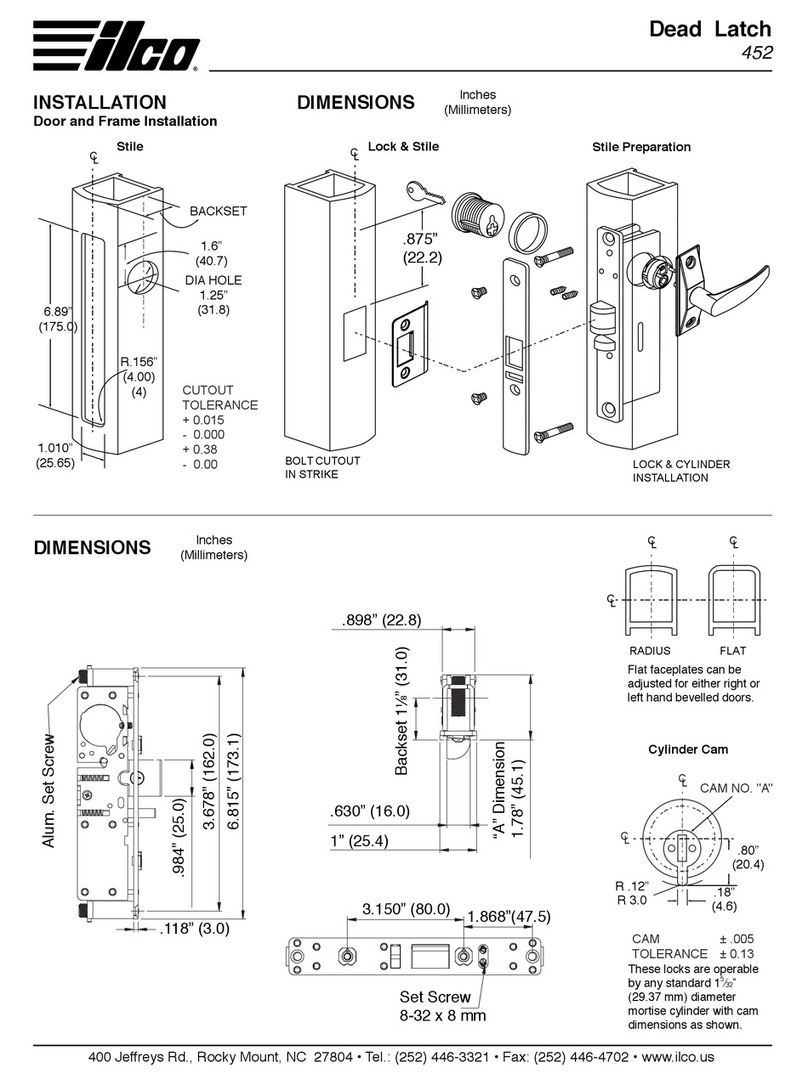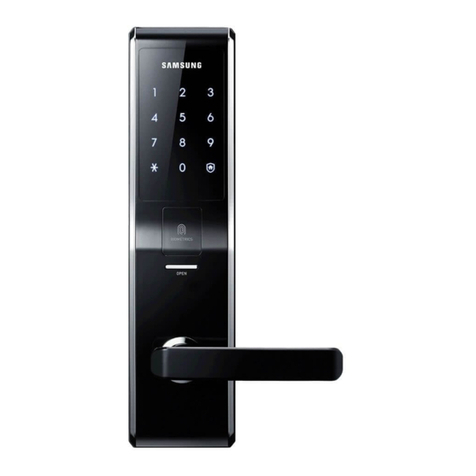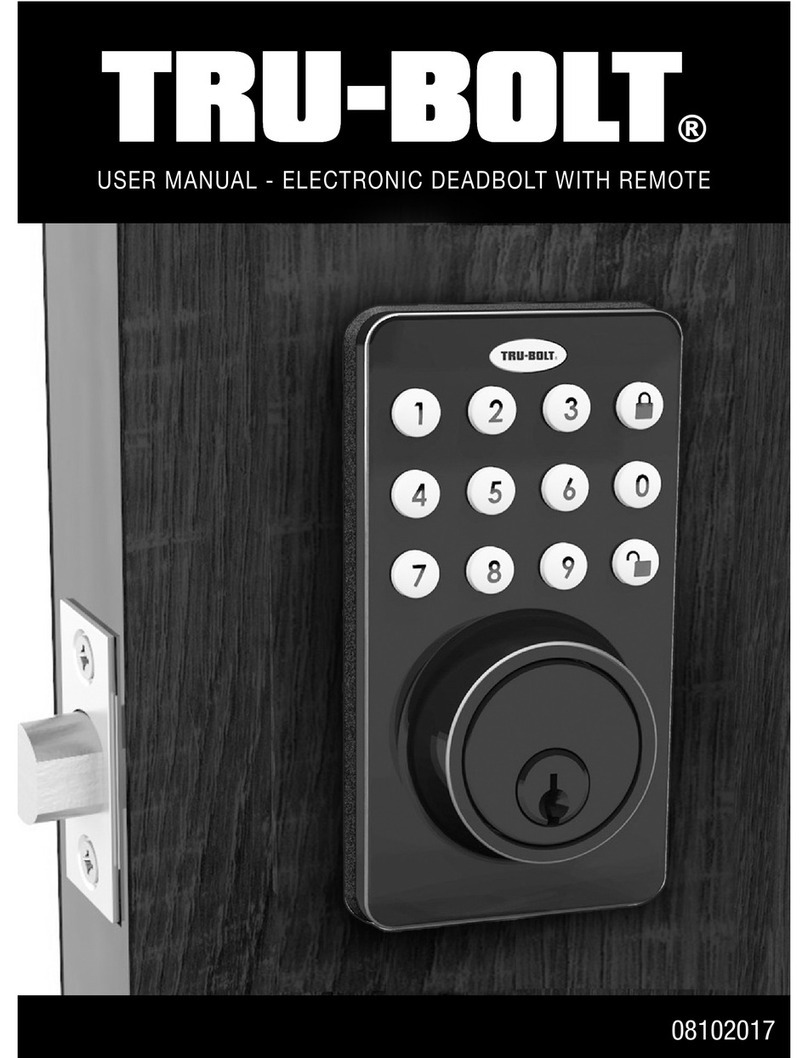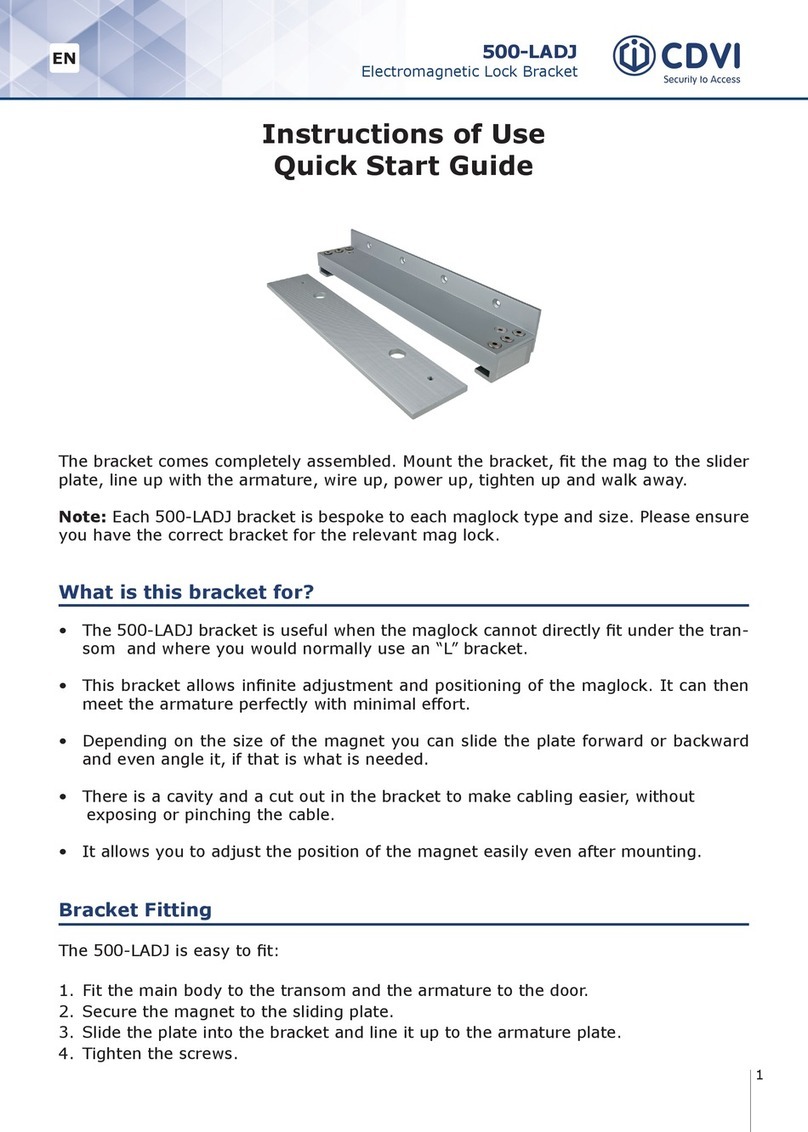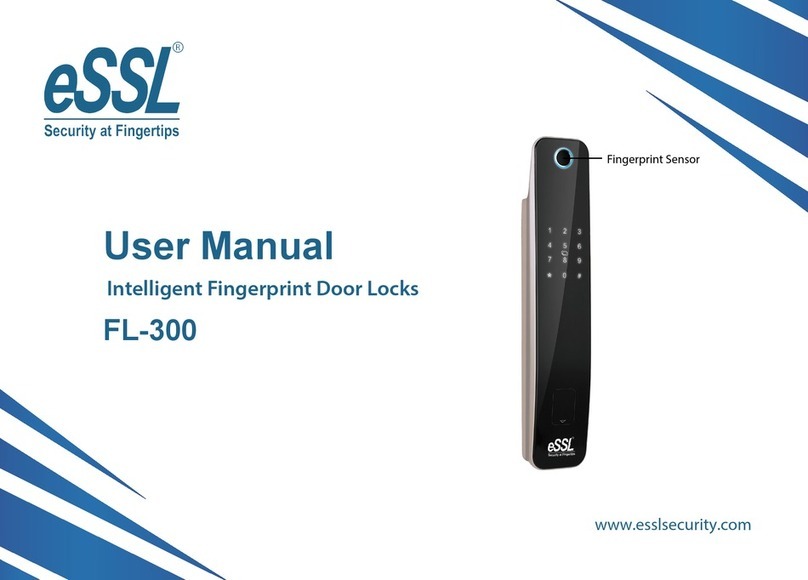Diagram D
CL5510
CONTENTS
Tools required for installation:
• Power Drill
• Drill bits CL5510 -
10mm (3/8”) & 25mm (1”)
• Drill bits CL5520 -
10mm (3/8”), 12mm (15/32”), 16mm (5/8”) & 20mm (25/32”)
• Hammer/mallet
• Philips screwdriver
• Chisel 25mm (1”)
• Stanley knife
• Adhesive tape, pencil, bradawl, tape measure
• Pliers and hacksaw for cutting bolts
Item 5510 5510PK 5520
1Front Plate 3 3 3
2 Back Plate 3 - 3
3Lever Handles 3 3 3
4Gaskets 3 3 3
5 Sprung Spindle x 1 3 3 -
6 Sprung Spindles x 3 - 15/26/60mm (1/2”/ 11/32”/ 23/8”) - - 3
7 1.5v AA Batteries x 4 3 3 3
8Mortice Latch, Strike and 4 Screws 3 - -
9 Fixing Bolts x 4 incl. spare 3 3 3
10 Inset Cup Washers x 3 - 3 -
11 Cable Tube and Ring Nut 3 - -
12 Alignment Insert 3 - -
13 Latch Support Post 3 - -
14 Allen Keys 3 3 3
15 Cable Connections for REM1 and REM2 3 3 3
16 Front Plate Cylinder Keys 3 3 3
17 Front Plate Cylinder Cover 3 3 3
18 Classroom Function Tailpiece 3 - 3
19 Mortice Lock & Cylinder - - 3
20 Battery Pack - 3 -
This box should also contain the installation template and getting
started guide.
Box Contents
Check the contents of the box are correct according to the model.
7Screw the cable tube into the front plate, passing the cable through the
tube. If your door is 45mm (125/32”) thick or less, please leave 10mm
(3/8”) cable tube thread showing on the keypad side. For doors more
than 45mm (125/32”) leave an appropriate amount of thread showing to
accommodate ring nut.
Example: For a 60mm (23/8”) thick door leave 15mm (3/5”) of thread
showing.
8Fit the self-adhesive gaskets to the front and back plates. The
gaskets provide friction against the door so that it is not necessary to
over-tighten the xing bolts to provide stability.
9 Remove the ve socket head bolts from the back plate (two are found
under the battery cover). This will release the inside xing plate.
10 Cut the xing bolts to correct length. Measured from beneath the bolt
head, the length should be the door thickness, plus approximately
15mm (3/5”) to the nearest cutting point of the bolt.
N.B. Always cut the bolts at one of the cutting points so as not to
damage a thread. Use the cutting edges of pliers to crimp strongly
several times around the selected cutting point. The surplus end should
break off quite easily.
11 Put the spindle into the latch with the spring on the front plate side of
the door.
12 Apply the front plate over the spindle, passing the cable tube
through the door and the latch support post through the latch. Place
the xing plate over the cable tube and spindle. Screw the ring nut
onto the cable tube until nger tight. Fit the alignment insert over
the spindle. Screw the xing bolts through to the front plate. (See
diagram D).
Alignment insert MUST be removed
before completing installation.
14 Connect the cables, storing any excess cable within the door.
Then install the batteries.
15 Fit the back plate over the xing plate using the four socket
head screws.
16 Fit the cylinder cover and outside handle to the front plate.
17 Fit the inside handle to the back plate.
18 The inside handle will now retract the latchbolt. The outside
handle will turn freely without retracting the latch. Enter the
factory Master Code #12345678. The keypad will ash blue
and the outside handle will now retract the latch.
19 Fitting the strike plate
Position the strike plate on the door frame so that the
aperture lines up with the at of the latchbolt, and NOT
the plunger. Mark the positions of the xing screws and
draw around the aperture of the strike plate. Chisel out the
aperture to 15mm (3/5”) deep to receive the latchbolt. Fix
the strike plate to the surface of the frame using only the
top xing screw. Gently close the door and check that the
latchbolt enters the aperture easily, and is held without too
much ‘play’. When satised, draw around the outline of the
strike plate, remove it and cut a rebate to enable the strike
plate to lie ush with the surface. Re-x the strike plate using
both screws.
N.B. The plunger beside the latchbolt deadlocks it to protect
against manipulation or ‘shimming’. The strike plate must be
accurately installed so that the plunger CANNOT enter the
aperture when the door is closed, even when it is slammed
shut.
13 Check that the alignment insert
slides freely into the xing plate
without binding. If it is tight, loosen
the xing bolts slightly and adjust
the position of the xing plate until
the alignment insert is centred.
Tighten the xing bolts and check
alignment. Do not over-tighten the
bolts as this may cause the door to
distort and affect the lock function.
PLEASE REMOVE THE
ALIGNMENT INSERT.
1Lightly mark a height line on the edge and both faces of the door
and on the door jamb, to indicate the top of the lock when tted.
Crease the template along one of the dotted lines - 60mm (23/8”) or
70mm (23/4”) latch - and tape it to the door with the top in line with
the height line. Mark the holes to be drilled. Mark the centre
Take time to be precise and nish the job quicker.
Installation holes must be drilled in exactly the correct positions and
precisely at right angles to the door surface. Lock components must
be vertically and horizontally accurate in relation to each other and
to the door.
WEDGE THE DOOR FIRMLY TO PREVENT MOVEMENT
WHILST DRILLING AND CHISELING.
FUNCTIONS INSTALLATION OF CL5510 LOCKS
Diagram B
CL5510 LATCH FUNCTION
Outside handle turns freely without operating the latchbolt. When the
code is entered the keypad will ash blue and the handle will retract
the latchbolt. The latch automatically locks the door when closed.
The key will open the door without the code.
CL5510
Diagram A
CL5510
template
Diagram C
CL5510
inside
front plate
CL5510PK
Front plates only for use with panic hardware.
4Put the latch into the hole and, holding
it square to the door edge, draw around
the faceplate.
Starting with the top and bottom cuts,
chisel a rebate to allow the latch face to
ush with the door edge.
(See diagram B).
5 Fix the latch with the wood screws,
with the bevel towards the door frame.
6Fit the latch support post on the inside
of the front plate, in hole A for a right
hand hung door and hole B for a left
hand hung door.
(See diagram C).
2Keeping the drill level and straight, drill a 25mm (1”) hole in the
centre of the door edge to accept the latch.
3Keeping the drill level and straight, drill the holes in the door face.
Drill from both sides of the door to increase accuracy and to avoid
damage to the other side when a drill goes right through.
line of latch on to the door edge.
Apply the template to the other
side of the door precisely against
the height line and the centre line
of latch mark. Mark the holes to be
drilled again.
(See diagram A).
CL5520
CL5520 ANTI-PANIC LOCK FUNCTION
Outside handle and key functions as before. Lock case key will
double-throw the deadbolt, retract the deadbolt and retract the
latchbolt without the code. When deadbolt is thrown it denies
access by code. The anti-panic feature allows the inside handle to
simultaneously retract the latchbolt and the deadbolt preventing
people being accidentally locked in.
REMOTE RELEASE OPTION
Cables are provided for the REM 1 and REM 2 terminals on the
circuit board.
REM 1 is for connection to a reception desk push button or a
door intercom system. Pressing the button will cause the keypad
to ash blue on the lock and release the lock for the pre-set time.
REM 2 is for connection to the building alarm system to release a
door in an emergency. This allows rooms to be easily checked to
ensure that no person is trapped or overlooked. When activated
REM 2 will maintain the unlocked condition for 30 minutes, the
keypad will ash red and BEEP during this time.
OTHER OPTIONS
Alternative functionality can be congured for the REM
connections including support for connection to dry contact
door sensors. For further information, please refer to the online
documentation at www.codelockssupport.com.
REM 1 and REM 2 should only ever be used with un-powered
switches or sensors. Connecting powered devices to these
connectors will damage your lock.
You should familiarise yourself with the operation of the lock and
check that all the parts work properly.
Remove the battery cover from the back plate and install the 4 x AA
cells supplied.
Connect the cables from the front plate and back plate. A BEEP
should be heard when you do this. If no BEEP is heard then check
that the batteries are correctly installed.
Place the long spindle in the front plate socket and using nger
grip only, test that the spindle is easily moved 80° in both
directions. Leave socket in the centered position.
Enter the factory Master Code #12345678.
The keypad will ash blue and the spindle should not turn as
before.
After 5 seconds the keypad will ash red and the spindle should
turn easily again. This conrms that the clutch engaged correctly
when the code was entered.
N.B. When the Master Code is entered 3 times consecutively
without performing a programming function, a penalty time of 10
seconds is activated.
Disconnect the cables.
OPERATIONS CHECK SPECIAL FIXING NOTE
FIRE KIT
A Fire Kit pack is available for the CL5510 locks. When tted, they
can be installed on 30 or 60 minute re doors.
Tested in accordance with BS3N1634-1:2008.
For more information about the Fire Kit packs please contact:
www.codelocks.com
Power
REM 2 REM 1
Motor Clutch
